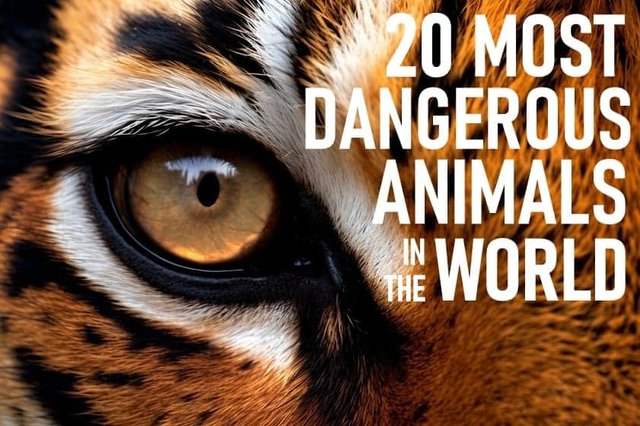The World’s Deadliest Animal and How to Stay Safe”
Mosquitoes: More Than Just a Nuisance
Mosquitoes are far more than irritating pests; they are considered the deadliest animals on Earth because of their ability to spread life-threatening diseases. Below is a detailed breakdown of the dangers they pose.
Main Danger: Disease Transmission
The greatest threat from mosquitoes lies in their role as vectors—they can carry and transmit pathogens (viruses, parasites, and bacteria) from one host to another.
When a mosquito bites an infected person, it ingests the pathogen. The pathogen multiplies inside the mosquito and can then be transmitted to another person through the mosquito’s saliva during the next bite.
Major Mosquito-Borne Diseases
Malaria
Pathogen: Parasites of the Plasmodium genus.
Impact: Causes high fever, chills, and flu-like symptoms. If untreated, it can become severe or fatal. According to the WHO, malaria killed about 619,000 people in 2021, most of them young children in Africa.
Primary vector: Anopheles mosquitoes.
Dengue Fever
Pathogen: Dengue virus.
Impact: Causes severe flu-like illness and can progress to severe dengue (dengue hemorrhagic fever), a leading cause of hospitalization and death in parts of Asia and Latin America. An estimated 100–400 million infections occur each year.
Primary vectors: Aedes aegypti and Aedes albopictus.
Zika Virus
Pathogen: Zika virus.
Impact: Usually mild, but extremely dangerous for pregnant women. It can cause serious birth defects such as microcephaly (underdeveloped brain and head) in newborns.
Primary vectors: Aedes aegypti and Aedes albopictus.
Yellow Fever
Pathogen: Yellow fever virus.
Impact: Causes fever, jaundice (yellowing of skin and eyes), bleeding, and organ failure. A significant percentage of severe cases are fatal.
Primary vector: Aedes aegypti.
Chikungunya
Pathogen: Chikungunya virus.
Impact: Characterized by severe, often debilitating joint pain that may last weeks, months, or even years. While rarely fatal, it causes widespread illness.
Primary vectors: Aedes aegypti and Aedes albopictus.
West Nile Virus
Pathogen: West Nile virus.
Impact: Most people show no symptoms. About 1 in 5 develop fever, and fewer than 1% develop severe, sometimes fatal neurological illnesses such as encephalitis or meningitis.
Primary vector: Culex mosquitoes.
Lymphatic Filariasis (Elephantiasis)
Pathogen: Parasitic worms.
Impact: A neglected tropical disease that can cause severe swelling of body parts, leading to pain, disability, and social stigma.
Primary vectors: Culex, Anopheles, and Aedes mosquitoes.
Other Significant Risks
Allergic Reactions (Skeeter Syndrome)
Some individuals, especially children, may develop severe allergic reactions to mosquito saliva. This leads to swelling, redness, warmth, blistering, and sometimes fever—symptoms often mistaken for bacterial infections.
Secondary Bacterial Infections
Scratching mosquito bites can break the skin, allowing bacteria (like Staphylococcus or Streptococcus) to enter and cause infections such as impetigo or cellulitis.
Psychological & Economic Impact
Persistent mosquito harassment affects sleep, reduces quality of life, and discourages outdoor activities.
Economically, mosquito-borne diseases impose a heavy burden through healthcare costs, lost productivity, and the expense of prevention and control programs.
Why Are Mosquitoes Such Effective Disease Spreaders?
Widespread presence: Found nearly everywhere on Earth, except permanently cold regions like Antarctica.
High reproductive capacity: They reproduce rapidly in stagnant water—from large ponds to something as small as a bottle cap.
Feeding habits: Female mosquitoes require blood to produce eggs. They bite multiple hosts, which increases the chance of spreading pathogens.
How to Protect Yourself
The best defense combines personal protection and mosquito control:
Use EPA-approved repellents: Look for products containing DEET, picaridin, IR3535, or oil of lemon eucalyptus.
Wear protective clothing: In mosquito-heavy areas, wear long sleeves, long pants, socks, and shoes. Treat clothes with permethrin for added protection.
Eliminate breeding sites: Remove standing water around the home (flowerpots, gutters, buckets, old tires, birdbaths).
Use physical barriers: Ensure window and door screens are intact. Sleep under mosquito nets, especially for infants and in malaria-prone regions.
Conclusion
While most mosquito bites only result in itchy bumps, the risk of life-changing or deadly diseases makes them one of the greatest global public health threats. Awareness and proactive prevention measures are essential to protect both individuals and communities.
